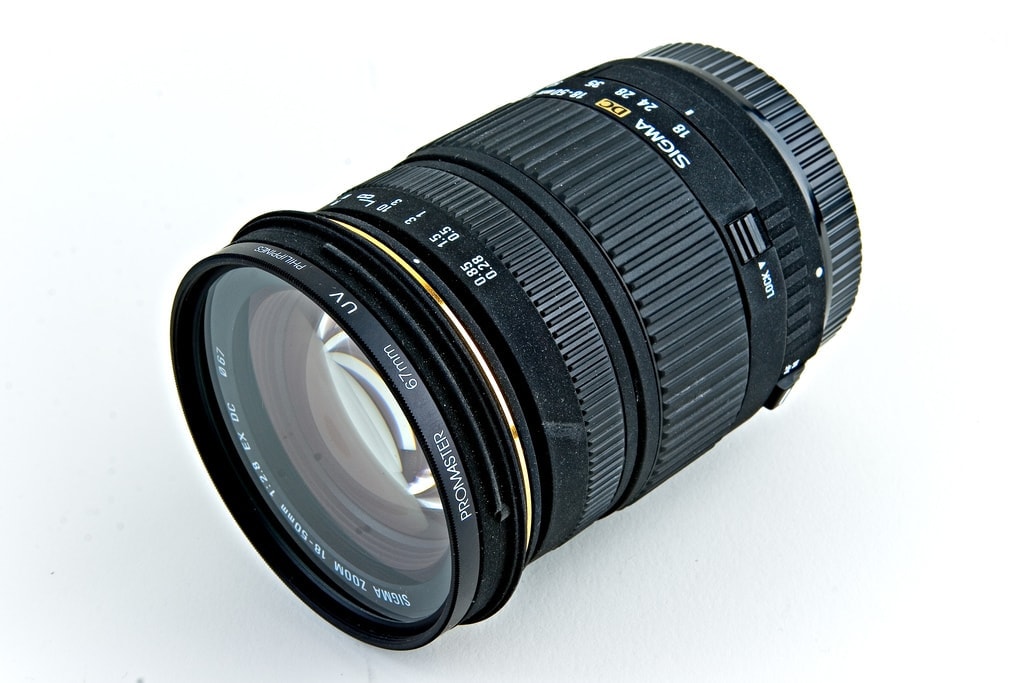I don't know about you but me the first times I tried to look at objectives to get one I ended up overwhelmed with so many abbreviations and so many strange acronyms. By the way, if you are looking to buy a lens here I have prepared a mega guide with tips, recommendations and some clarifications, an essential before buying any optics.
But now I continue with today's topic, in the end I found out about the most frequent abbreviations and terms by force, but today it occurred to me that perhaps it would not be a bad idea to share with you my small and particular dictionary of lenses for SLR cameras with their respective abbreviations as well as the function or characteristic that each one offers.
In addition to terms and abbreviations common to all lenses in general, I have gathered specific terminology from the 4 most dominant lens brands on the market right now, which are Nikon (Nikkor) and Canon on the one hand, the two SLR camera manufacturers. that dominate the market at the moment, and Sigma and Tamron on the other hand, the latter specialized in manufacturing objectives for various brands.
Sonystas, Olympists, Pentaxeros and others: I owe you an apology. As soon as I can, I will update the post with similar sections for your brands.
COMMON GOAL ABBREVIATIONS
- Focal distance: It is the distance between the plane of the image and the plane of the optics. For example, if we handle a lens with a focal length between 18 and 55mm, that means that it covers focal lengths ranging from 18mm (relatively wide frame) to 55mm, which would be a kind of zoom that would bring us closer to the photographed subject but showing a smallest part of the scene to be photographed.
- Maximum aperture: Every time we press the shutter button on the camera to take a photo, the lens has a diaphragm that is normally closed and when it is time to take the photo it opens and closes again. The maximum aperture is how large the maximum opening of the diaphragm is. The larger the maximum aperture, the more light the lens is able to capture and therefore the better. The maximum aperture is referred to with the f/ value so that the smaller this value is (for example f/2.8) the larger the maximum aperture and therefore the better.
- AF/MF: Auto focus/manual focus.
NIKON LENS ABBREVIATIONS
- DC (Defocus Control): Defocus control by adjusting spherical aberrations.
- CRC (Close-Range Correction): Helps to obtain higher quality in fisheye, wide angle, etc. lenses.
- DX: Optimized lens for cameras with small sensor .
- FX: Lens optimized for cameras with Full Frame (large) sensor .
- ED: Extra-low dispersion crystal. It offers greater sharpness and better colors by correcting blue and red.
- IF: Internal focus, so the length of the lens does not change.
- Macro: Optimized for macro photography (very close, example: flowers, insects, etc.).
- G: Aperture controlled from the camera body.
- VR: Nikon's own technology to reduce vibrations when taking the photo.
- PC-E: Perspective control for architectural photography.
- RF: Back Focus for smoother autofocus.
- SWM: Silent autofocus.
- PC-E: Aim with Tilt-Shift effect. They are lenses with which you can get photos with the famous “thumbnail” effect.
CANON LENS ABBREVIATIONS
- EF: Electronic focus. These types of lenses are valid for the entire range of Canon EOS SLR cameras.
- EF-S: Similar to the above but only works with cameras whose sensor is APS-C (eg: 40D; 50D; 300D; 450D; 500D).
- USM: Ultrasonic Auto Focus Motor.
- STM: Another type of silent focus motor.
- DO: Diffractive optics, a technology that makes it possible to produce targets with smaller physical lengths.
- TS-E: Lenses used to correct perspective. They are generally used in architecture and building photography to alter vanishing points and depths of field.
- L Lens: Professional Canon lenses with superior optical quality. They are normally white with a red ring surrounding them.
- MP-E: Electronic Macro Lens. They are lenses for macro photography with electronic aperture control.
- IS: Image Stabilization.
- TS-E: Lens with Tilt-Shift effect. They are lenses with which you can get photos with the famous “thumbnail” effect.
SIGMA TARGET ABBREVIATIONS
- EX: Professional lenses from Sigma..
- DG: Lenses for full-body cameras (not Digital SLRs).
- DC: For cameras with an APS-C body.
- ASP: Aspherical lens.
- APO: Apochromatic lens. Exclusive to Sigma and fulfills the function of correcting chromatic aberrations.
- OS: Optical Stabilization.
- HSM: Autofocus mute.
- RF: Rear focus.
- IF: Internal focus so that the physical length of the lens remains fixed thus reducing movements and vibrations.
- DF: Dual focus. It does not rotate during autofocus.
TAMRON LENS ABBREVIATIONS
- ASL: Aspheric Lens.
- AD: Chromatic aberration reduction .
- Di : These are lenses that work only with cameras whose sensor is Full Frame (the size of 35mm film).
- Di II: For cameras with small sensors (like APS-C for example).
- IF: Internal focus.
- LD: Chromatic aberration reduction.
- Macro: For Macro photography.
- SP: Superior performance lens. Simply.
- XR: Lens with a refractive glass that helps to obtain better optical results.
- VC: Vibration control.
- USD: Silent Focus Motor.
That is all for today. Print this page out and keep it for future reference, or if you're feeling especially generous pass it on to a friend to spread the word.


